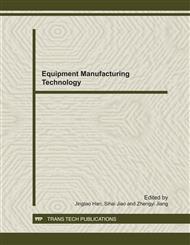p.392
p.397
p.401
p.409
p.416
p.420
p.424
p.430
p.434
Flow Analysis in Horizontal Curved Pipe of Dense-Phase Pneumatic Conveying Gypsum Powder
Abstract:
Horizontal curved pipe which are widely used in the engineering project and less researched were selected to study in the high concentration of fluidized transportation. Compressed air was used as the transmission power and gypsum powder as the transport medium. And then, the flow characteristics in horizontal curved pipeline of dense phase pneumatic conveying gypsum powder were achieved. The experimental results showed that the geometry parameters such as angle of the bend, radius of curvature and operating parameters i.e. conveying pressure, gas velocity, solid velocity etc have a dominant effect on the gas solid flow process.
Info:
Periodical:
Pages:
416-419
Citation:
Online since:
December 2011
Authors:
Price:
Сopyright:
© 2012 Trans Tech Publications Ltd. All Rights Reserved
Share:
Citation:


